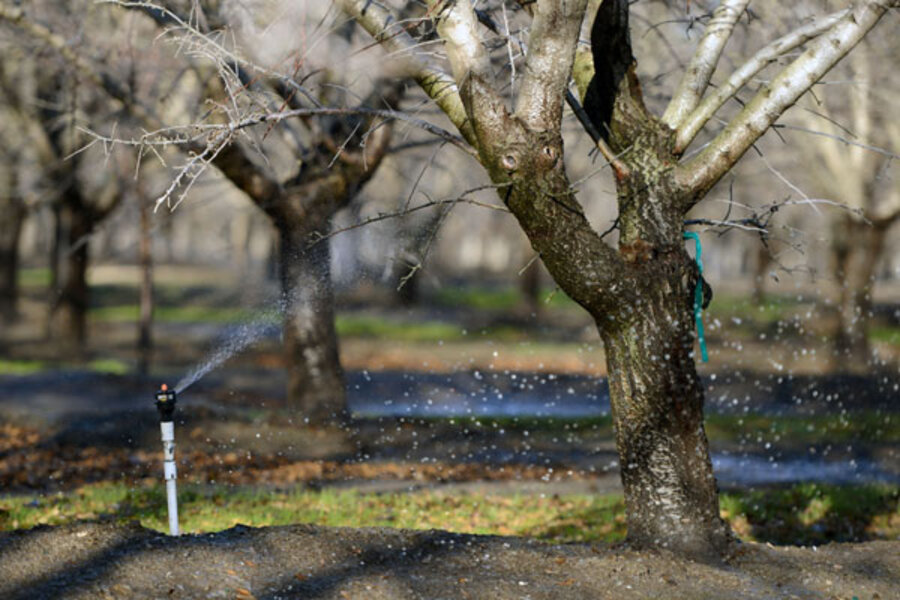Historic California drought called a red flag for future of US
Loading...
| Los Angeles
As California faces the worst drought in its 163-year history with no hint of relief in sight, some scientists are calling the event a red flag for the future of the nation.
Gov. Jerry Brown raised the issue in his State of the State address Wednesday, saying “we do not know how much our current problem derives from the build-up of heat-trapping gasses, but we can take this drought as a stark warning of things to come.”
Water shortages have widespread impacts. Agriculture and energy generation account for 80 percent of the nation’s clean water use, says David Dzombak, head of Carnegie Mellon University’s Civil and Environmental Engineering Department. And even when cities meet their water demands during a drought, the costs can leave them “exposed to significant risk of financial failures,” says Patrick Reed, a professor of civil and environmental engineering at Cornell University, in an e-mail.
In that way, crises can led to new policies and new attitudes, and some say the California drought could be just such a catalyst.
“At the state, regional, and federal level, and across the country, people are just starting to come to grips with the fact that our climate is not stationary,” says Professor Dzombak. “We are in a dynamic, changing climate situation that will affect all parts of the country in different ways,” he says, led by the West and Southwest so impacted by drought.
Governor Brown laid out a roadmap of drought solutions Wednesday. He asked businesses and homeowners to voluntarily reduce their water usage by 20 percent. Last week, he declared a state of emergency.
“It is imperative that we do everything possible to mitigate the effects of the drought,” he said in his speech. “We need everyone in every part of the state to conserve water. We need regulators to rebalance water rules and enable voluntary transfers of water and we must prepare for forest fires.”
Longer term, the State Water Action Plan prioritizes water recycling, expanded storage, and groundwater management, as well as investments in safe drinking water, “particularly in disadvantaged communities.”
These mandates are a “tall order,” Brown said. But it is “what we must do to get through this drought and prepare for the next.”
Major innovations of the last century came in response to water shortages, such as the 1928-34 drought, notes Jay Lund, director of the Center for Watershed Studies at the University of California at Davis, in a blog post.
“This six-year drought accelerated design and construction of the Central Valley Project and served as the design standard for most of California’s water system until 1976,” he says. Quoting Stanford University economist Paul Romer, he adds, “a crisis is a terrible thing to waste.”
Similar innovations today could involve shifting to renewable energy sources that do not require as much water as steam-driven electrical plants.
The severe drought highlights the need for “a new way of thinking about our infrastructure,” says Dzombak.





